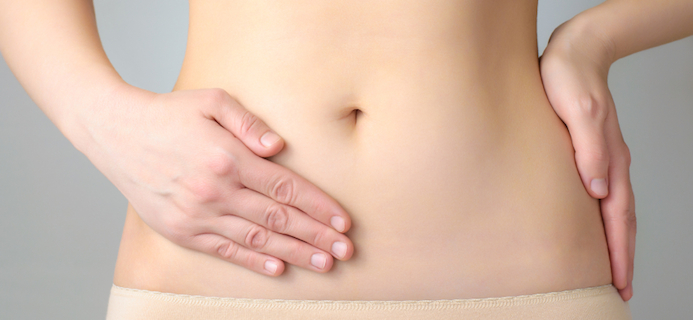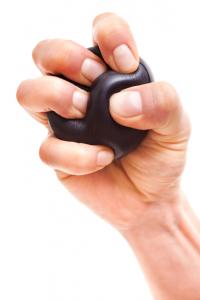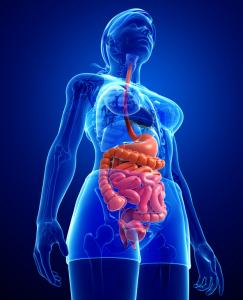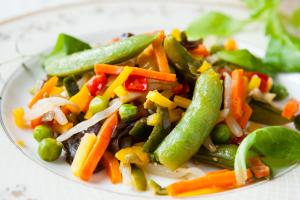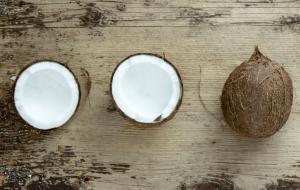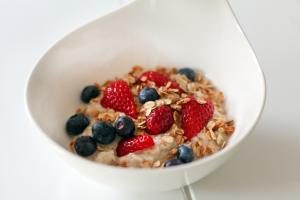Who knew that what’s in your belly can be the main cause of stress? Healthista blogger Charlotte Watts, nutritionist and yoga teacher explains how to optimise your gut to heal your head
Your belly isn’t just that place where the food goes, it’s actually at the centre of all body systems and its health can influence how we feel and react to stress. Looking after your core can have repercussions and improve your quality of life on many levels.
The ‘second brain’ in your belly
There is a massive and independent ‘second brain’ running the whole route of your digestive tract – from mouth to anus – called the enteric nervous system. This has about 100 million cells, that’s one thousandth as many as there are neurons (nerve cells) found in the human brain and around the same as a cat’s brain. This brain in your gut is capable of ’thinking‘, ’remembering‘ and ’learning‘, so whilst it isn’t able to make cognitive thoughts, it accounts for how we sense, how we intuitively feel about a situation or environment and the kind of ‘vibes’ we get from people.
Scientists are understanding more and more about how gut feelings protect us
This is an important survival mechanism as it determines whether we should approach or withdraw from a situation. If you want to leave a room or not spend time with a certain person, you really should listen to this ‘gut instinct’. Scientists are understanding more and more about how gut feelings protect us – about 90 per cent of information goes bottom-up (brain to gut) so not trusting our senses can lead to more stress in life.
Healthy gut bacteria
Our digestive tracts are ideally colonised by around eight pounds of beneficial bacteria or probiotics; that’s more cells than in the whole of our skin. These are depleted by sugar, stress, antibiotics, steroid medications and stomach bugs. Their job is to create energy from food to feed the gut wall, create some B vitamins and help digestion, but they also influence our emotional responses.
The gut-brain axis
Information flows back and forth continuously between the brain and your gut using more than 30 neurotransmitters (brain chemicals), most of which are biochemically-identical to those found in the brain. It is estimated that 50 per cent of dopamine and 95 per cent of the serotonin in the body is found within the GI tract. This doesn’t enter the brain, but it signals how the land lies back up to your central nervous system via probiotics.
A healthy gut environment is the basis of good mental health and how well we’re able to calm down after a stress has passed.
How probiotics help
Discrepancies in our gut environment can create imbalances in the central nervous system. Recent research has shown that different probiotic strains can actually cause anxiety and reduce excess stress hormones. As they can also regulate the immune system, this recipe may help to reduce stress-related irritable bowel syndrome (IBS) symptoms, immune issues, inflammatory conditions such as those of the skin and joints and help recovery from burnout and adrenal fatigue.
Numerous studies have shown that psychological stress suppresses beneficial bacteria. Inflammatory immune system messengers called cytokines triggered from the gut wall during the stress response have shown to disrupt brain neurochemistry and make people more vulnerable to anxiety and depression.
In a nutshell, stress changes our digestive system environment, making our stress coping less and then keeping up the stress response – a constant vicious cycle if we don’t prioritise stress-relief and support good gut health.
7 WAYS TO LOWER YOUR STRESS BY HEALING YOUR GUT
1. Don’t graze
Satisfying meals with quality protein, healthy fats and plenty of vegetables provide all the nourishment we need. Giving our digestive processes a rest between meals allows the whole business to have the energy it needs. It takes up to 40 hours for food to travel from swallowing to out the other end and each time we put something else into our mouths, we start up the whole thing over again and allow little rest for healing. Some snacking can help regulate blood sugar at the right times, but oral fixation with food can lessen our relationship with hunger and our body’s true needs.
2. Chew your food, like really
Full chewing is crucial to good digestion as it signals to the stomach and intestines to prepare for the arrival of food. The taste of foods tells the body exactly which combination of fats, proteins and carbohydrates are on their way, so your gut can prepare the right enzymes to break them down.This isn’t just important to absorb nutrients from our food, but also to ensure that only partially digested food isn’t hanging around, when it can putrefy, create gas and lead to symptoms like constipation, diarrhoea and food intolerances. Mindful eating during meals has shown to naturally regulate portion size and create the satisfaction that lowers food cravings later.
3. Eat gut-healing foods
Fermented foods – like yoghurt, sauerkraut, kefir, miso and apple cider vinegar – can help create a gut environment where probiotic bacteria can flourish. Gut wall cells can also be fed by the fats in organic butter (butyric acid) and coconut oil (SCFAs), which also support the immune system. Daily cruciferous vegetables like cabbage, kale, broccoli and pakchoicontain substances called sulphurophanes that support cell and liver detoxification and provide sulphur for gut wall healing.
4. Get enough rest
Allowing full rest regularly and good quality sleep allows the energy that the gut needs to constantly repair. Thinking, moving and even just standing directs fuel, circulation and nutrients to our muscles and brain. When you consider that the most recent approximation of gut surface marks it the size of half a badminton court and each cell is renewed every 4-5 days, it’s easy to see how our digestive health can suffer without adequate rest.
5. Pack in the vegetables, have grains an beans cooked traditionally
A diet high in vegetables feeds minerals, soluble fibre and fluids directly to the gut mucosa. Many modern diets contain more grains (wheat, rice, oats, etc.) than vegetables, which can be a strain on gut health as many gases can be produced. Going back to traditionally processed grain sources like the sourdough bread, artisan breads or Bircher muesli is a softer gut choice as the potentially inflammatory anti-nutrients they contain are broken down. Eat grains and beans (lentils, chick peas, black beans etc) only processed traditionally – cooked in onions and garlic, preferably in a slow cooker.
6. Take a course of Aloe Vera juice
If you have a period of constipation, gas or feeling that you’re not having that ‘full and satisfying evacuation’ that is the sign of integral gut mucosa, a course of Aloe Vera juice can help. 25ml before bed gives this gel from the leaf of the plant to work its healing magic when your digestive system is empty and you are in full resting and renewal mode. Chewing also stimulates the thymus gland to produce T-cells, a major part of the protective immune system; your body knows that unwelcome guests like harmful bacteria may be on their way.

7. Try gut-healing Bircher Muesli
This Bircher Muesli recipe from my book The De-Stress Effect can help to hydrate, nourish and allow healing in the gut. It’s a great alternative to muesli or cereals that may be more difficult to break down and cause inflammation on the gut wall. The linseed helps to create a protective mucilage on the gut wall.
The recipe
Soak 35g rolled oats and a dessert spoon of golden linseeds in water or half water/half freshly squeezed organic apple juice overnight in the fridge.
For protein add a tablespoon of nuts and seeds – choose from almonds, Brazils, walnuts, pecans, sunflower and pumpkin seeds.
Sweeten only with ground cinnamon and fruit from the optional extras below.
Add optional extras – chopped dried apricots, prunes, unsweetened desiccated coconut, grated apple, berries, sliced or stewed plums.
You can add a dollop of live Greek or plain yogurt to taste.
For variety or a gluten-free option, quinoa or millet flakes can be used in place of oats.

Charlotte Watts, a nutritionist and yoga teacher whose work has focused on how nutrition and yoga can meet to help people cope with the demands we face in the 21st Century. Her practice and teaching of mindfulness weaves these together and has culminated in her new book The De-Stress Effect: Rebalance Your Body’s Systems for Vibrant Health and Happiness which can be purchased on Amazon.
Like this article? Sign up to our newsletter to get more articles like this delivered straight to your inbox.



